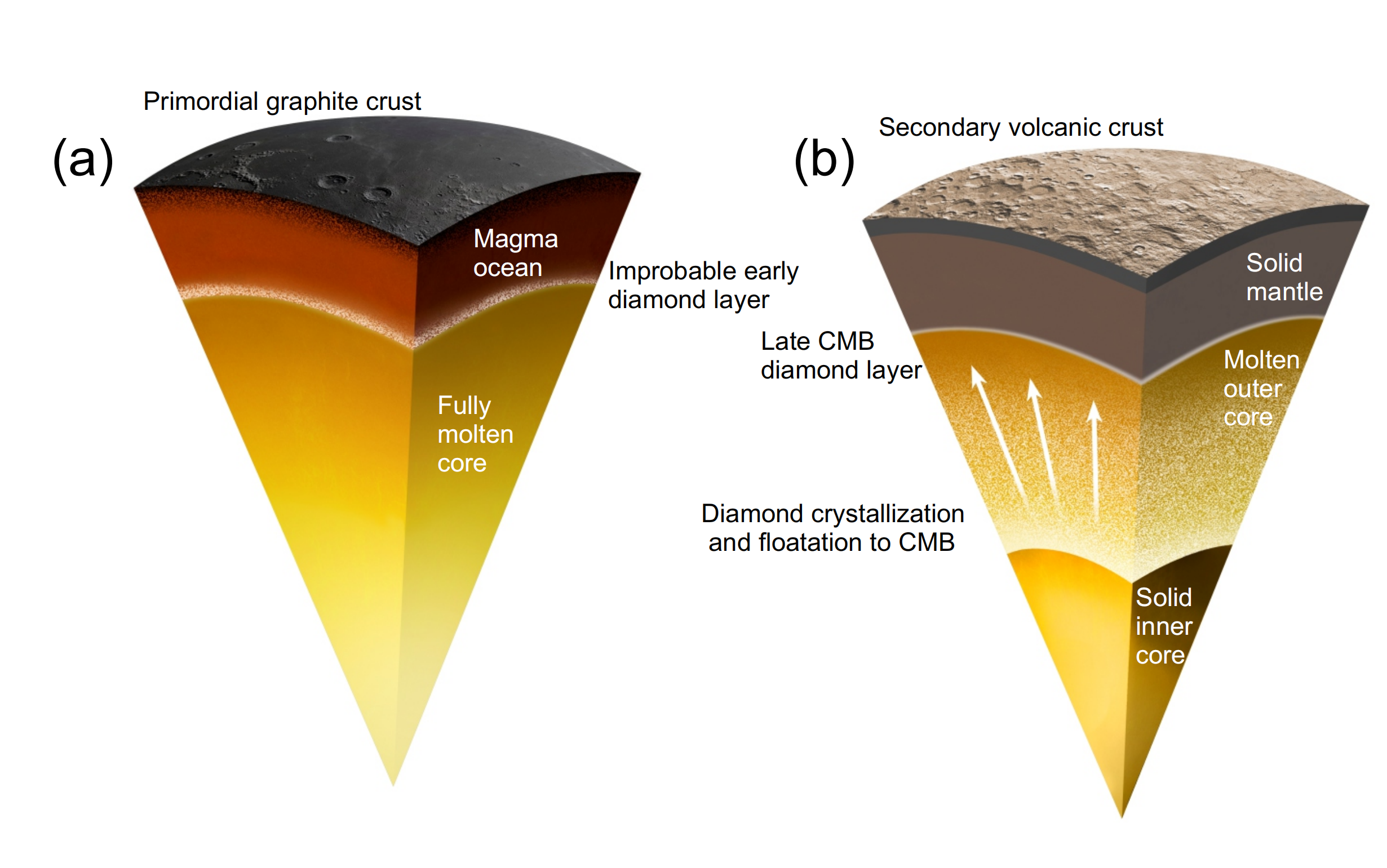New study from a team of scientists led by Dr. Yanhao Lin from HPSTAR used lab techniques to mimic the extreme conditions of Mercury's core-mantle boundary. Combining with the latest planetary physics models and thermodynamic calculations, they demonstrated that there is a stable diamond layer at Mercury's core-mantle boundary, which gradually thickens as Mercury cools. This diamond layer has a major influence on the thermal evolution and magnetic field generation of Mercury's interior. This work published in Nature Communications provides a new perspective for our understanding of the structure and evolution of Mercury.
Spectral data from the MESSENGER spacecraft confirmed that unlike other terrestrial planets in the solar system, Mercury is a carbon-rich planet, with graphite widely present on its surface, indicating that early in Mercury's formation, its interior had reached carbon-saturation. However, what form of carbon exists in Mercury's interior has been a long-standing question, which relates to some key scientific questions such as Mercury's thermal evolution history, the origin of magnetic fields, and the carbon cycle within it.
The team used a large-volume press to mimic the high-temperature and high-pressure conditions of Mercury's core-mantle boundary. Combining with the latest models of Mercury's internal structure and thermodynamic calculations, they found that the carbon inside Mercury can exist in the form of both graphite and diamond. If the early Mercury magma ocean contained more than 7% sulfur, graphite could change into diamond at the bottom of the magma ocean and deposited at the core-mantle boundary. On the other hand, with cooling of Mercury's interior along with the crystallization of its metal core, diamond will deposit in the Mercury core and float to the core-mantle boundary, forming a stable diamond circle. Based on existing planetary physics models, the team estimated that the diamond layer at Mercury's core-mantle boundary today is between 14.9 and 18.3 km thick and will gradually thicken as Mercury's interior cools.
 Caption: Proposed scenario for the formation of diamond at Mercury’s core-mantle boundary.
Caption: Proposed scenario for the formation of diamond at Mercury’s core-mantle boundary.
The existence of diamond layer at the core-mantle boundary of Mercury can efficiently transfer heat from liquid out core to mantle, causing temperature stratification and convection change in Mercury's liquid outer core, and thus affecting the generation of its magnetic field, which has a major impact on the evolution history of Mercury.
“Carbon is one of the key volatile elements in understanding planet formation, including the formation and evolution of atmospheres and habitable planets, and our study defines the phase stability of carbon in Mercury's interior, while will also be helpful to understand the evolution of other carbon-rich planets, and even exoplanets.
北京高压科学研究中心的林彦蒿课题组在水星内部物质构成及其圈层结构的研究领域取得了重要进展。该团队运用高温高压实验模拟水星核幔边界的极端环境,并结合最新的行星物理模型和热力学计算,证明水星的核幔边界存在一个稳定的金刚石圈层,并且其会随着水星的冷却而逐渐增厚。该金刚石圈层对水星内部的热演化与磁场产生有着关键性影响。这一研究成果为人类理解水星内部物质圈层结构与演化历史提供了新的视角。相关研究以"A diamond-bearing core-mantle boundary on Mercury"为题,发表于Nature Communications。
